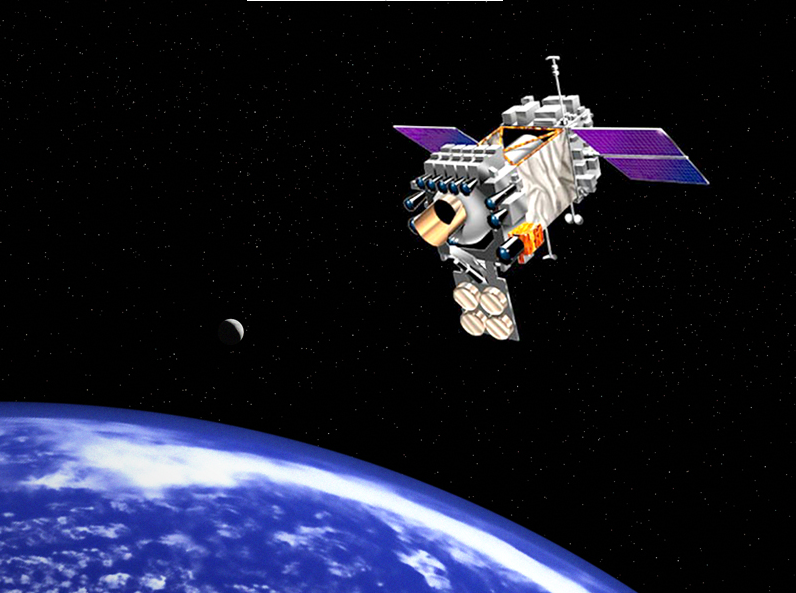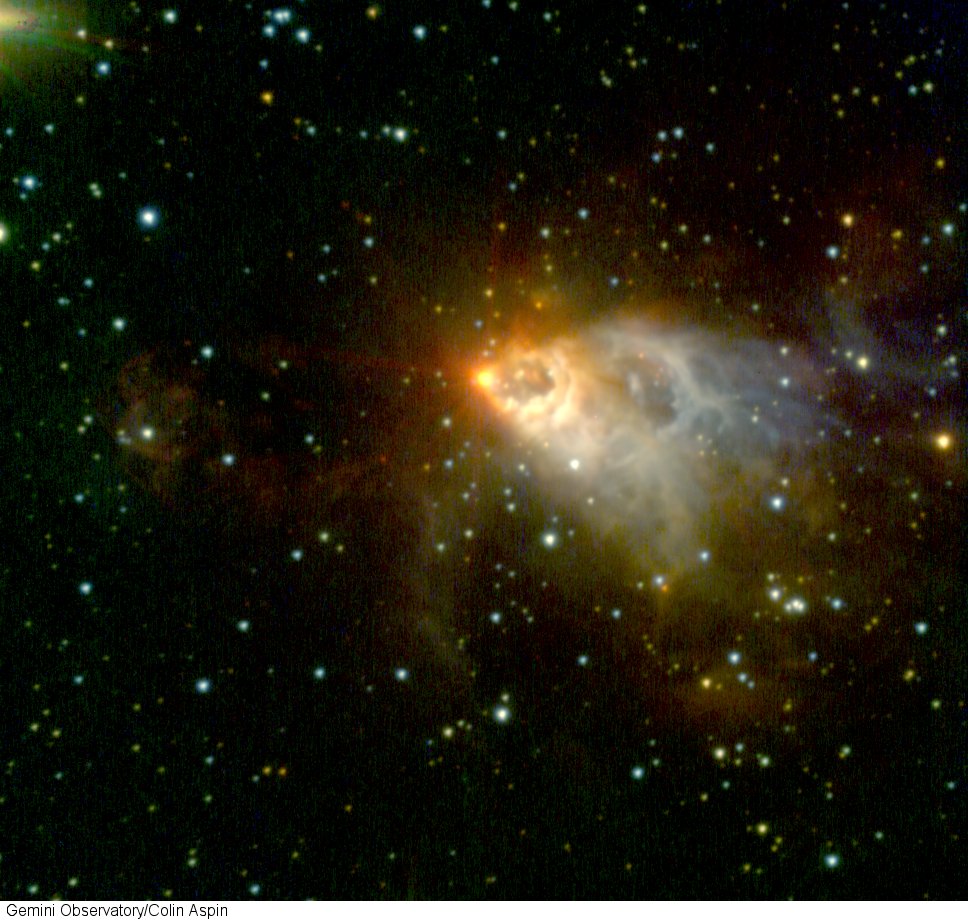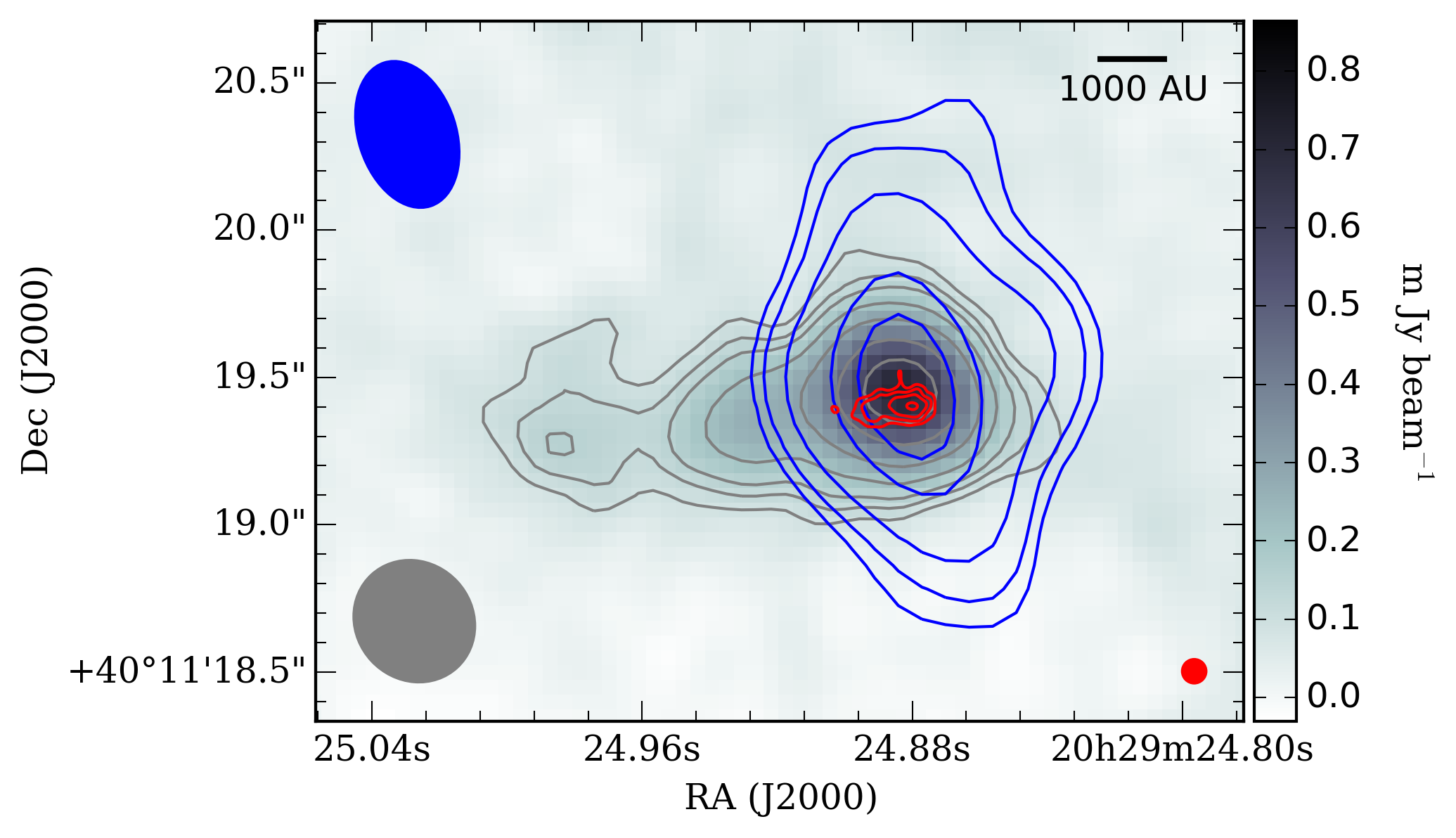Large-Scale Galactic Surveys
Leeds observers are involved with a number of large-scale suveys of the Galactic plane; these surveys capitalise on the latest high resolution and high sensitivity failities in order to catalogue objects in our galaxy that can be used to study star formation.
The CORNISH Survey

The CORNISH survey (Co-Ordinated Radio 'N' Infrared Survey for High Mass Star Formation) is a Leeds led project that provides the most uniformly sensitive, homogeneous and complete list of compact radio-emission sources at 5 GHz towards the northern Galactic plane. The survey is a useful radio comparison to the mm and IR surveys imaging ionised gas in the interstellar medium such as GLIMPSE and UKIDSS. For more information see the CORNISH Survey website or read the core CORNISH publications on Survey Design (Hoare et al. 2012) and the Source Catalogue (Purcell et al. 2013).
Using the Very Large Array (VLA) the survey produced a catalogue of over 3000 radio sources including a complete and unbiased survey of ultracompact HII regions (UCHIIs). UCHIIs act as reliable signposts for massive star formation and so a complete survey of their locations gives us information on the spiral structure of our galaxy and whether UCHIIs are preferentially forming in the centre or towards the edge of dense molecular clouds. The survey can also show us the morphology of UCHII regions in our galaxy; an important part in resolving the 'lifetime paradox' observed in UCHII regions. This was a problem first highlighted in Wood & Churchwell (1989), requiring any formation theories to also include some form of confinement mechanism in order to explain the amount of observed UCHII regions relative to the number of OB stars. At Leeds these observational studies have been complemented by simulations of cometary-type HII regions.
A sister survey CORNISH-South has been observed by the Australian Telescope Compact Array (ATCA) based on the southern Spitzer GLIMPSE area. This will be the first Galactic plane survey to use broad band systems and on-the-fly interferometry.
The RMS Survey

Another survey driven by Leeds is the Red MSX Source (RMS) Survey, designed to systematically catalogue the massive young stellar objects (MYSOs) in our galaxy. MYSOs are very luminous embedded sources that cannot yet ionise their surroundings to create ultracompact HII regions. The dense circumstellar dust that envelops the source means that most of the energy comes out in the infrared.
The survey used the MSX satellite to carry out mid-IR observations ideal for detecting MYSOs. The result was a catalogue of around 5000 sources enabling thorough systematic and statistical studies of this important phase of massive star formation. The RMS study has become a valuable tool for studying the massive protostellar population in our Galaxy. Results include setting limits on star formation rate and accretion rate history for young massive stars, proving the importance of disc accretion and demonstrating how the processes at work in star formation change with time. For more information see the online catalogue or the core survey paper (Lumsden et al. 2013).
E-Merlin Project

Credit:Gemini Observatory/Colin Aspin
Leeds researchers are taking a lead in the e-Merlin Legacy project "Feedback Processes in Massive Star Formation" of which Prof. Hoare is the principal investigator. Observations of a large sample of MYSOs hopes to test both our understanding of the physics of feedback mechanisms and the current evolutionary models of massive star formation.
An early result of this survey is shown by the figures on the right hand side. Figure 1 shows an IR image of the MYSO GL2591, this can be compared with Figure 2 which shows the same object but with radio and mm observations overlaid, giving us more detailed information. The red shows the E-Merlin data, allowing us to resolve the jet down to 100 AU-size scales. This is accompanied by VLA data in grey showing a the jet on a larger scale and mm interferometric data in blue showing the dust disc around the MYSO.
Further Projects

As well as the projects above, members of the group are involved with a number of other surveys and projects; Prof. Hoare is an active member of the SKA
Cradle of Life science working group, whilst Prof. Oudmaijer leads a large VLT X-Shooter collaboration on Herbig Ae/Be stars and holds a place on the Mid-infrared E-ELT Imager and Spectrograph science team. Working at the centre of these international collaborations allows for research at Leeds to take advantage of the most modern technological advances so that our scientific investigations can fully utilise cutting edge techniques and facilities.
It is only through the combination of different wavelengths, sensitivities and resolutions that we can give ourselves a comprehensive view of our galaxy. The comparison between seperate observations can tell us alot about the environment in which massive stars form, as Figures 1 and 2 help to show us.
